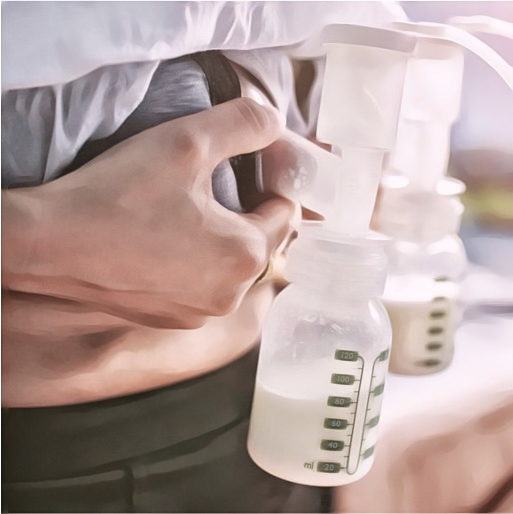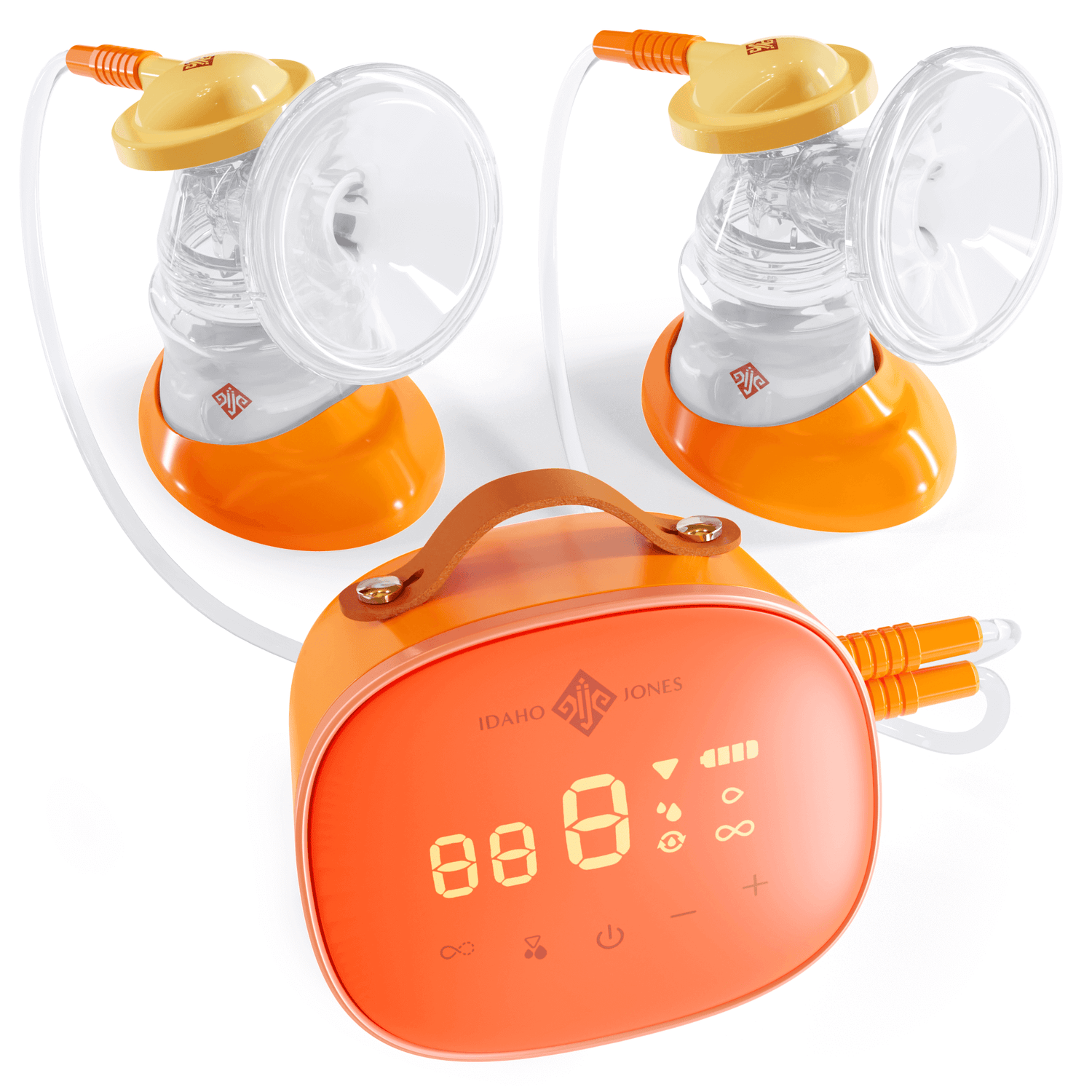
Are Breast Pumps Covered Under Insurance
Share
Pregnancy means a lot of things, and one of them is often planning. If you’re looking ahead to your little one’s arrival and plan to breastfeed, chances are you’re curious about when and how to get a breast pump. For those giving birth in the United States, breast pumps are generally covered by insurance. If you’re wondering how to get a breast pump through insurance, read on.
Insurance Coverage for Breast Pumps
All insurance companies (other than a few exceptions that were grandfathered in) are required by the Affordable Care Act to cover breast pumps, either a rental unit or a pump that you’ll keep. Your insurance plan will determine the type of pump (manual or electric), the length of the rental, and when you’ll receive your pump (before or after birth).
To understand the specifics of your breast pump insurance coverage, you can call a representative from your insurance company and ask them to walk you through your benefits. In order to speak with an insurance agent at your specific company, you can call the customer service number on the back of your insurance card. You may benefit from doing so early in pregnancy, and you can ask about other prenatal and postpartum benefits. Some insurance companies offer programs that include phone or email support from a registered nurse and a variety of lactation benefits and coverage.
Type of Insurance
Your breast pump coverage may vary based on the type of insurance you have. If you’re wondering how to get a breast pump through Medicaid, for example, you should look at the specifics of your state’s plan. Most Medicaid plans cover breast pumps for new breastfeeding dyads, but the details of your benefit will depend on your specific plan. Many of the Medicaid insurance plans will only pay for and ship your breast pump after your baby is born.
Marketplace insurance that you purchase yourself, as well as insurance received as an employment benefit, typically covers breast pumps as well, and many of these plans will allow you to get your breast pump prenatally, either anytime during pregnancy or at a particular point in pregnancy (commonly 30 days before your due date).
This toolkit from Women’s National Law Center includes more information about types of insurance and the coverage they provide.
Who Supplies the Breast Pump Through Insurance?
Even though your insurance covers a breast pump, the insurance company likely isn’t the one supplying the pump. Often your insurance provider will tell you which companies they work with to supply breast pumps, typically medical supply companies like Edgepark or Aeroflow Breastpumps.
You can also get a breast pump from a retailer like Walmart or Target, through initiatives like the Target Breast Pump Program or Walmart Breast Pump Program. When working with these familiar retailers to get your breast pump through insurance, you typically reach out via phone or online, confirm your doctor and insurance, and then choose your pump once your coverage has been verified.
Some hospitals can also help you get your insurance-covered breast pump, usually in the postpartum unit. If you still haven’t gotten a breast pump and are in the hospital for your baby’s birth, ask a nurse or hospital lactation consultant about getting a breast pump through the hospital. They may be able to send one home with your or have a breast pump sent to your home after discharge.
Do I Need My Doctor’s Approval to Get a Breast Pump Through Insurance?
Some insurance plans require a prescription from your healthcare provider (typically your obstetrician or midwife) to receive coverage for your breast pump. Your care provider is likely very familiar with writing prescriptions for breast pumps, but if they seem unsure, here’s what’s commonly required in a breast pump prescription:
- Your care provider’s name. This could be your OB/GYN, registered nurse, or midwife.
- Your name.
- Date. The prescription should include the date written and needs to be current.
- Request for a breast pump. Your prescription needs to include a specific request for a breast pump. Appropriate phrases are “breast pump,” “double-electric breast pump,” or “bilateral breast pump” (not “hospital-grade”).
- Diagnosis code. To be valid, your prescription needs to include a diagnosis code. Your provider can use any code related to your pregnancy and lactation needs. You’re unlikely to need to know the code, but according to pump supplier Ameda, commonly used codes are Z39.10, Z34.80 and Z34.00.
- An original signature from your provider. The prescription is required to have your doctor, midwife, or nurse’s signature (it cannot be stamped).
When Can I Get a Breast Pump Through Insurance?
As previously stated, the time window that you can get your breast pump through insurance varies based on your coverage. Some plans will provide a pump at anytime during pregnancy, others require you to wait until a certain date (such as 30 days before your due date), and others require you to wait until your baby has been born.
If you find yourself in an emergent situation where your baby will be born sooner than expected, you may be able to get a breast pump sooner (in the case of a 37 week induction, for example, you can reach out to your doctor requesting a prescription that includes your induction date instead of your due date). If your baby arrives early and you don’t have a pump, you can often use one of the hospital’s pumps for the duration of your stay and then discuss renting a hospital pump or receiving a single user pump after discharge.
Which Breast Pump Should I Get?
Shopping for a breast pump can be overwhelming because in addition to the many options on the market, your selection may be limited by your insurance coverage. You can start your search by finding out what pumps are covered by your plan, and shopping from there. Even if you’ll get your breast pump through a medical supply company, you can read reviews from popular shopping sites like Amazon, Walmart, or Target. You can also check out the company websites for pumps that you’re interested in. Additionally, many moms find it helpful to reach out to others, either in your personal network or in a pregnancy or parenting group or forum.
As you consider your pumping goals (check out our post “How to Start Pumping Breast Milk” for more on goal setting), think about what type of pump would best suit you. Common pump types are:
- Manual: These hand-powered pumps (like the Medela Harmony) can be great for use for travel or on-the-go, but may be too laborious for long term or frequent use.
- Single Electric: A single electric pump will be easier on your hands, but will only allow you to empty one breast at a time. Again, this can be a good option for occasional or temporary use, but may be challenging for daily use or large amounts of milk.
- Double Electric: Double electric pumps are the most common type of breast pump and allow you to pump both breasts at once. The strength of a double electric pump will depend on the design of the device and its motor, and many have various settings for strength and speed.
- Wearable: An emerging style of breast pump, wearable, hands-free devices like the Freemie and Elvie pumps can be used for pumping while moving freely about. These pumps may be partially covered by your insurance, but are generally not covered in full.
Note: “Hospital-grade” does not have an agreed upon definition, and can be used by any manufacturer to describe their pump(s). Generally this distinction is about the strength of the breast pump motor, and means that a pump’s motor can last for multiple users. To find a pump that will last as long as you need, you can often find how many hours a pump’s motor is rated for in the user guide.
In closing, getting a breast pump through insurance can be confusing, but follow these simple steps to hopefully acquire your free breast pump through insurance:
- Reach out to your insurance to learn about your coverage. Or get in touch with a breast pump supplier and let them do it for you.
- Choose a pump. You can research online, ask a friend, or reach out to a lactation professional for advice.
- Get a prescription from your care provider (if you need, not all insurance companies require this).
- Order your pump and cross this task off your pregnancy or postpartum to-do list!


